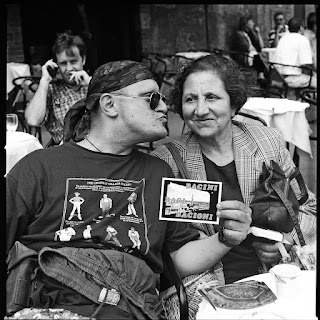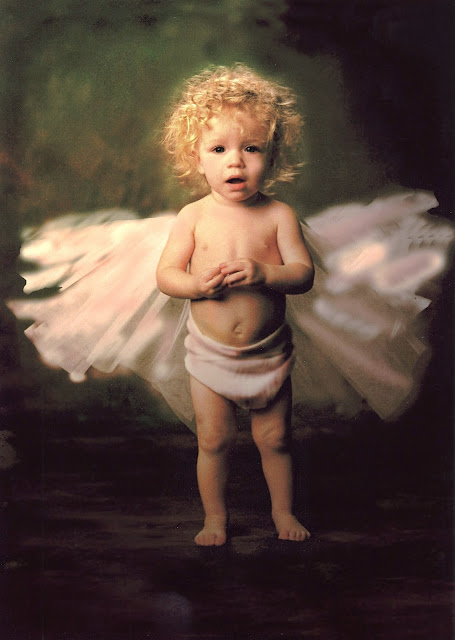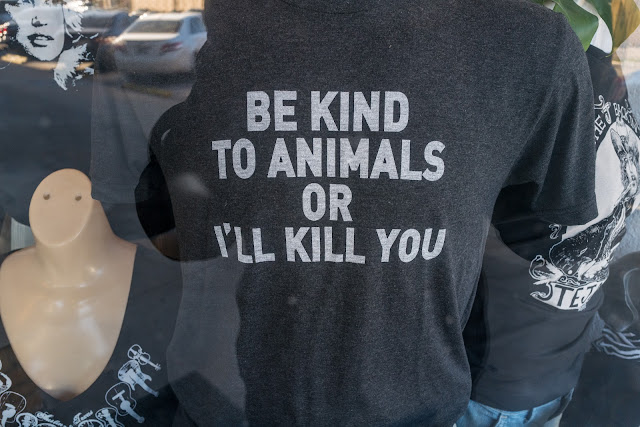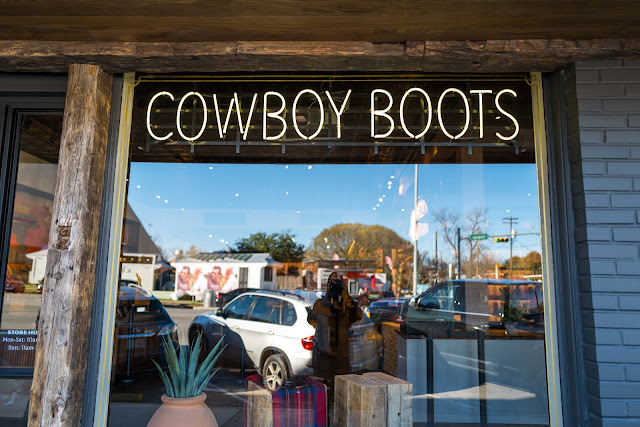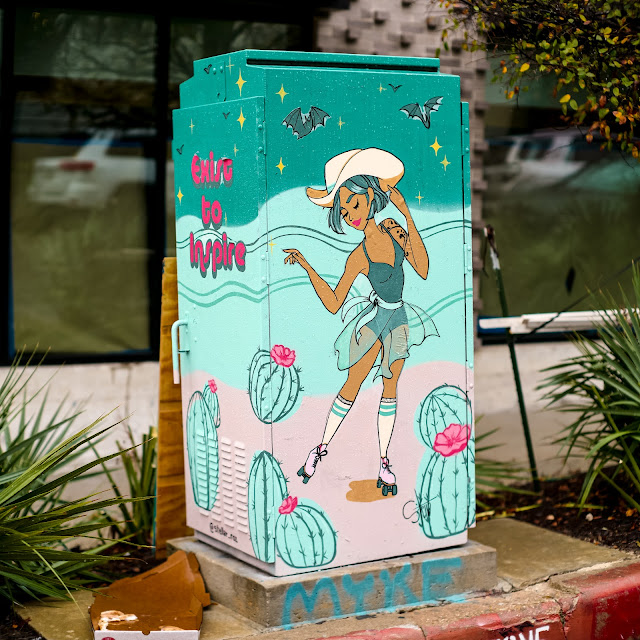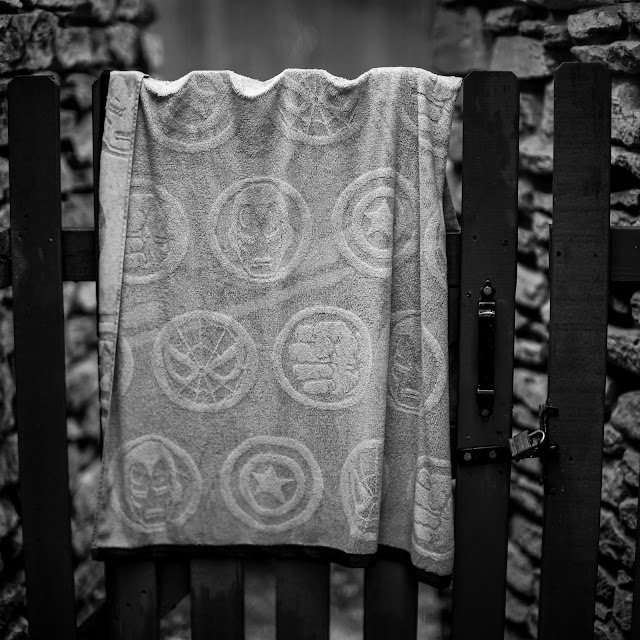12.25.2022
Merry Christmas! Five wonderful things photography provides that don't have anything to do with the "magical powers" of any specific camera or lens.
12.24.2022
Wishing you a very Merry Christmas, Happiest Holidays, and, if non-aligned, a wonderful time with family and friends.
Many years ago we used to do a yearly holiday card to our photography clients. I'd send out printed cards to about 250 people on our mailing list. Of all the cards we ever sent this one (above) was the most popular. Ben was about a year old and his mom (VSL Chairperson = B) created the wings while I took the photos. We used a primitive copy of Photoshop (1.0?) to do a bit of retouching but in 1996 the capture was definitely on film. And we weren't savvy enough at the time to composite anything so most of the heavy lifting was done in the camera.
The card was very well received. In fact, my favorite story about it came over ten years later when I got a call from a person at Dell, Inc. who wanted to hire me for a project. I asked how I came to her attention and she told me I'd sent the card to someone else at Dell, she liked it and asked the person if she could have it at the end of the season. She said it was then pinned to a spot on her work cubicle wall for ten years until she found the "perfect" project to share with me. I was amazed. A ten year shelf life!
Anyway, you, my VSL readers, seem like family and I wanted to share something for the holidays from 25+ years ago. I also want to thank you.
I appreciate that you show up here, mostly ignore my spelling and grammatical errors, forgive me (mostly) if you think I'm on the wrong side of the political spectrum, disagree with my diatribes, and think my ever changing equipment choices range from insane to diabolically misguided. And I'm amazed that after all that you still take the time to read, comment, agree and disagree. Your attention to my daily writing about photography is the ONLY thing that makes the blog work. That makes writing something every day worthwhile to me.
I no longer consider you to be a "reader." I've come to think of you as friends I haven't met yet.
I know it's been a tough year for some and a decent year for others. Photography is the glue that holds us together. And it's been another great year for photography. In that arena I've been having a blast. And it's twice as much fun because I can share the journey with you.
The holidays are upon us. My goal is to ratchet down the stress for anyone I can. More naps. More walks. More quiet coffees. More time to read. Less arguing. And my tiny present to you is that I'm going to write my way through the next couple of weeks so we have nice continuity. I'll have a reason to sit and think and then write (although sometimes I get that backwards....) and I hope I'll provide you with a little diversion with a fun or interesting read accompanied by a few choice images. Something to enjoy over coffee in the mornings.
May you get everything you wish for. May you wish for stuff that's really cool. We all have enough. So be sure to share.
With my warmest regards to all of you! - Kirk
A neat trick for driving ardent Leica enthusiasts crazy.....
Yeah. Just stick a current 35mm Leica Summilux ASPH on the front of an ancient EPL-2 Olympus camera and watch the knit eyebrows of judgement quiver.
It's a fun game to play but it can get expensive pretty quickly: https://www.bhphotovideo.com/c/product/720355-USA/Leica_11663_35mm_f_1_4_Summilux_M_Aspherical.html
I mostly used the 35mm Summilux on M cameras like this one:
12.23.2022
Strolling in the afternoon. So much to see.
Just a few more images on the day before the day before Christmas.
It's the night before the night before Christmas and I'm out casual-shopping with a camera and no real agenda.
It's been a strange December. Usually I'm busy and behind all month long but this year I finished early and got my shopping done quick. We were stuck at home last night to vigilantly tend to the precautions surrounding the Arctic Blast. Dripping interior faucets, meticulously wrapped exterior faucets, conscientious wrapping of plants, moving space heaters into the spots where the central heating is clearly under performing. So today, after a dermatologist performed a quick surgery on my shutter finger (not kidding!) I got back "on the horse" to make sure that finger could still trigger the shutter release on a camera. Of course I couldn't do that at home. I had to have a "real world" test. So I headed back over to S. Congress and pretended to be shopping when I really just wanted colorful stuff to photograph.
The digit still works. The freezing temperatures are novel but wear on one quickly. One more thing checked off the pre-Christmas list. Quick procedure does not impinge on finger performance.
I hope all my friends across the vast expanse of the Western Hemisphere are tucked in some place safe and warm tonight. And that they go to sleep dreaming about making incredible photographs with their favorite cameras. It's cold here. I can only imagine the frosty hellscape further north. Be safe. Stay warm. Drink lots of coffee.
Today's finger therapy camera was the new (to me) Leica Q2. It functioned well in spite of the chilly weather. More tomorrow.
12.22.2022
If I could only have one camera which one would it be?
12.20.2022
The world can seem blurry until you've had that first, perfect cup of coffee in the morning...
Coffee prep. The "pour over." Leica SL + 50mm TTArtisan f0.95. Not sharp until after the first dose.
New Shoes. Starting out the next year on the right foot. Or the left...
My favorite shoes for all day walking around are just about anything from Keen. These Targhee iii casual walking shoes were on sale for half price. I couldn't resist. I get about two years of wear out of most hiking shoes. I tend to put on a lot of miles and very few of them on smooth floors or carpeting. The soles eventually wear down. Resoling them isn't very cost effective. I'm not even sure it can be down. But this brand is one of the few with enough arch support and good tread to make me comfortable and happy.
After wearing this new pair around for a week I could kick myself for not ordering a second pair at that price. It's a good practice to rotate through your hiking shoes to keep them from wearing down too quickly. Also, letting them sit a day or two after a long day's service lets the absorbing materials regain their loft for the next foray.
I think we have three more days of good swim weather until Thursday afternoon brings the deep freeze to town. I made the most of today's swim. Attendance was sparse for the noon workout but that meant the three of us who showed up had more personalized coaching. Thursday morning's pre-storm workout should be packed.
And for the those brilliant readers who follow swimming... I was excited to see Brendan Hanson on the pool deck today. He was giving a one on one coaching session to a lucky high school swimmer. I listened carefully between my sets....
 | |
| Personal information | |
|---|---|
| Full name | Brendan Joseph Hansen |
| National team | |
| Born | August 15, 1981 (age 41) Haverford Township, Pennsylvania, U.S. |
| Height | 6 ft 0 in (183 cm) |
| Weight | 189 lb (86 kg) |
| Sport | |
| Sport | Swimming |
| Strokes | Breaststroke |
| Club | Longhorn Aquatics |
| College team | University of Texas |
show Medal record Brendan Joseph Hansen (born August 15, 1981) is an American former competition swimmer who specialized in breaststroke events. Hansen is a six-time Olympic medalist, and is also a former world record-holder in both the 100-meter and 200-meter breaststroke events (long course). He won a total of twenty-five medals in major international competition, eighteen gold, four silver, and three bronze spanning the Olympics, the World, and the Pan Pacific Championships. He was a member of the 2012 United States Olympic team, and won the bronze medal in the 100-meter breaststroke and a gold medal in the 4×100-meter medley relay at the 2012 Summer Olympics. | |
12.19.2022
Part 2. Cold, rain-soaked day continues on S. Congress Ave. Sadly, I passed up several good mannequin opportunities.... But...Holiday stuff galore.
Defaulting to the square. A cold day in Austin with non-stop rain. What to do? How about photography at Barton Springs Pool?


